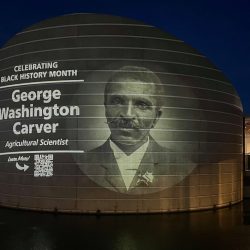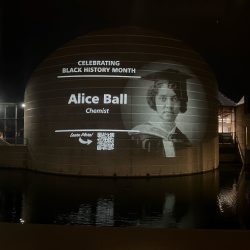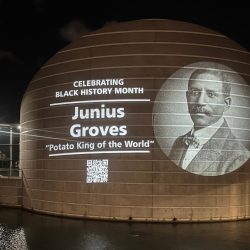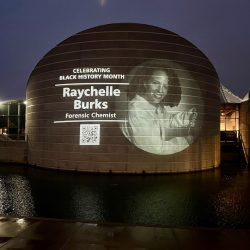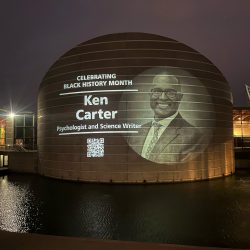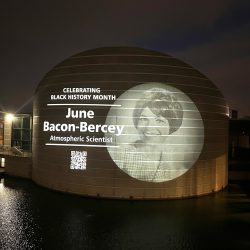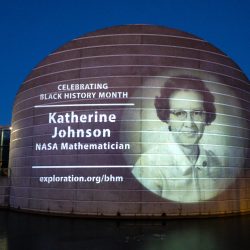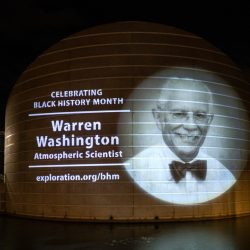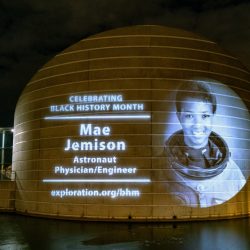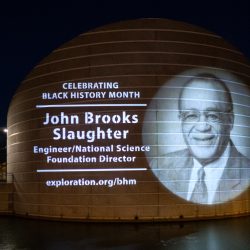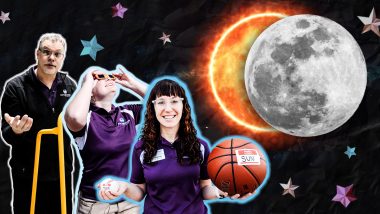An epic adventure playground that blends the thrill of aviation with the joy of discovery. Landing Fall 2025.
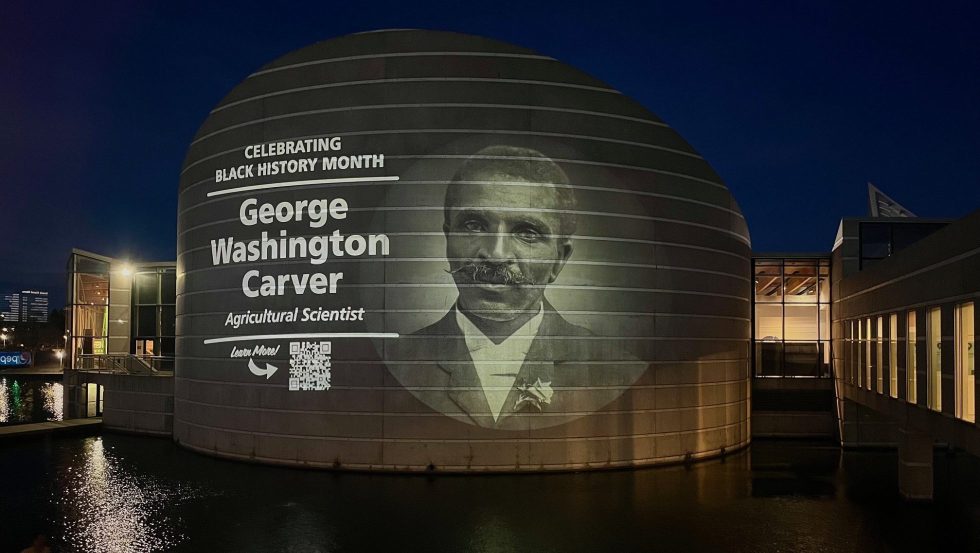
News & Events
Black History Month: Celebrating African American Scientists
January 26, 2024
Exploration Place, in collaboration with The Kansas African American Museum, is celebrating Black History Month by honoring the contributions of a different scientist each week with an outdoor display.
Each week we will be projecting an image of an African American pioneer in science onto the side of our iconic island building, highlighting their contribution to the STEM community. We encourage you to visit the display and use it as a learning opportunity for your family to discuss the impact that each scientist had in their field.
Make it an evening and stay to watch the nightly 7 pm Ring of Fire lighting at the Keeper of the Plains and view the twelve riverfront banners featuring a selection of women in STEM.




